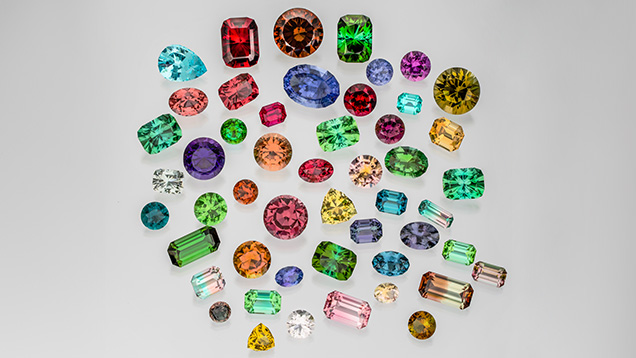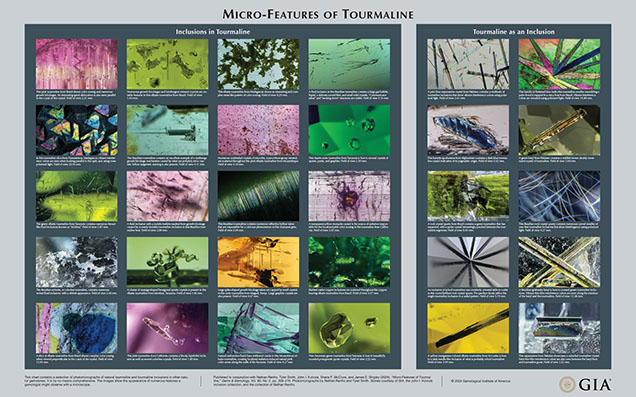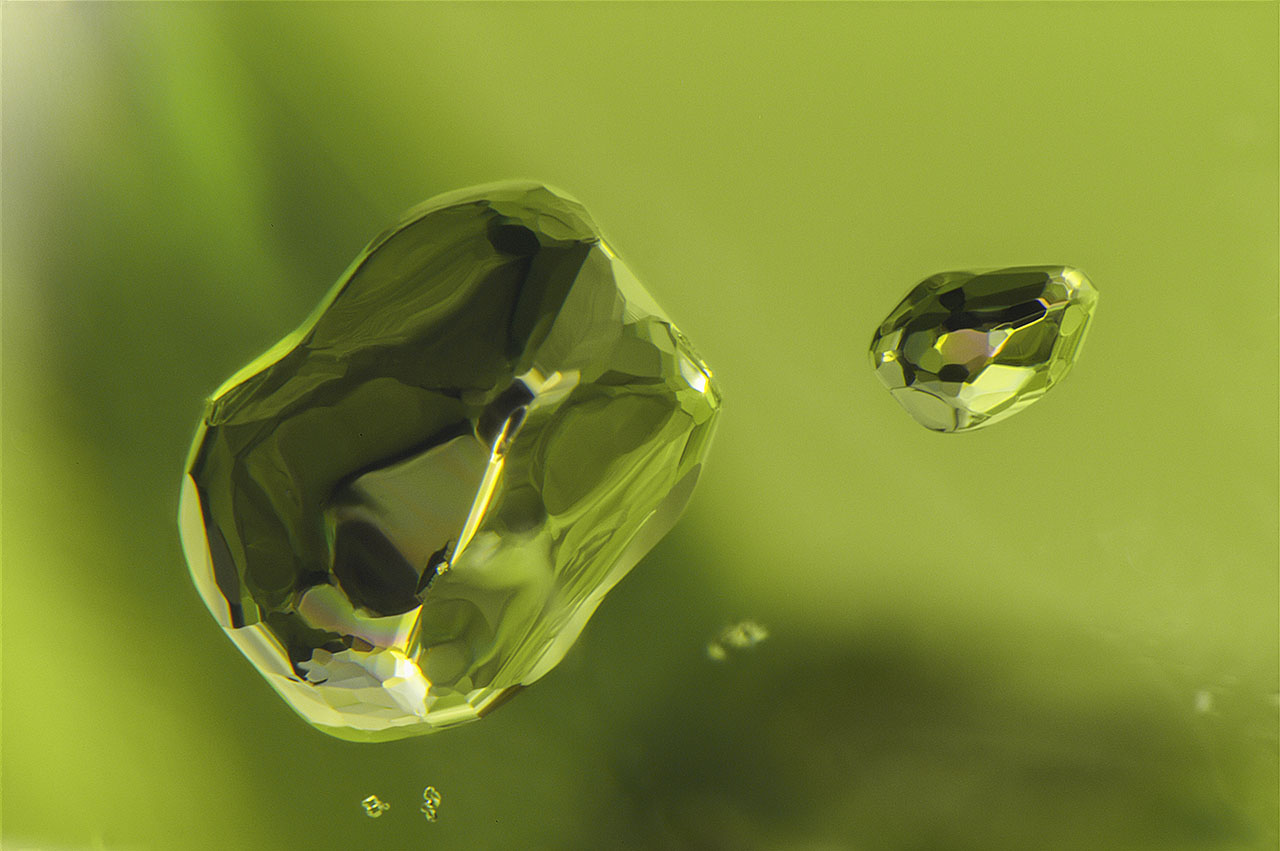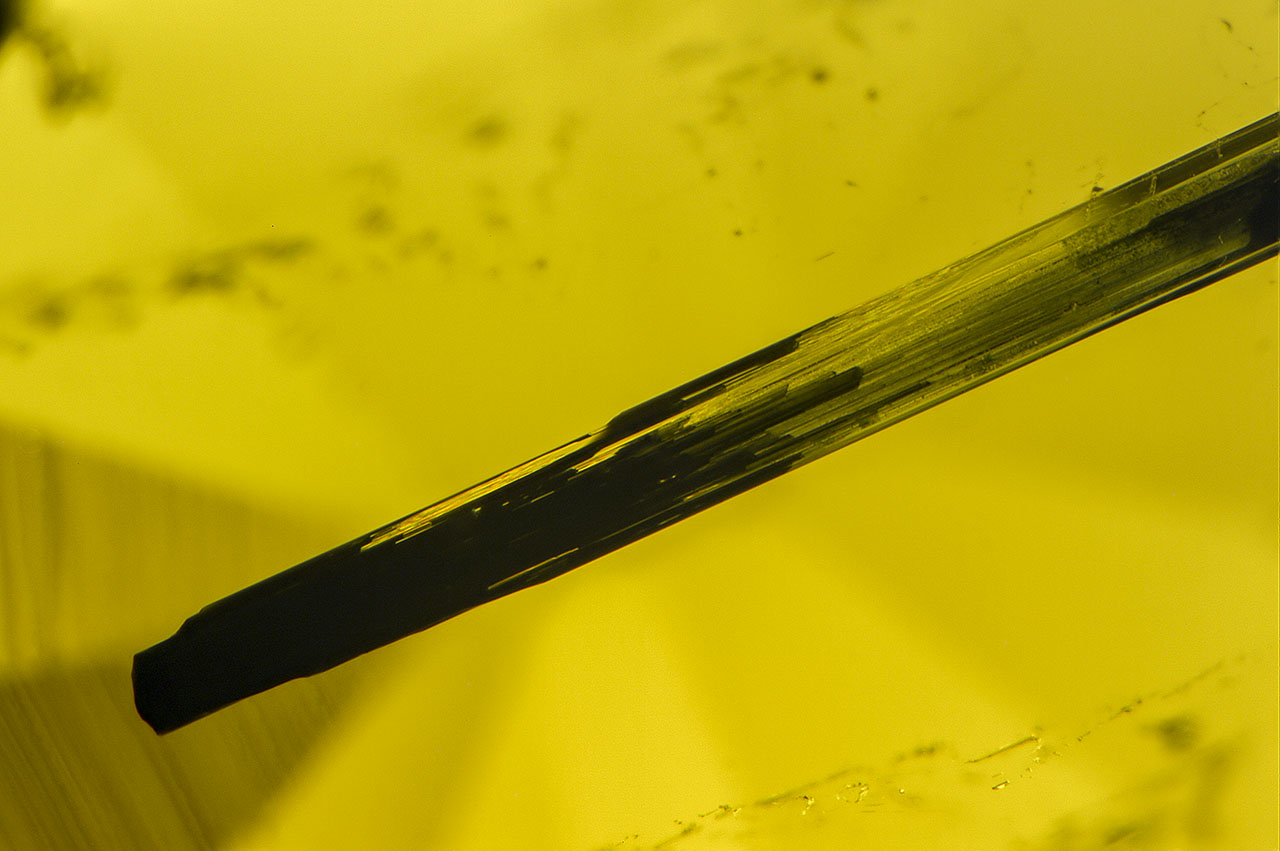Micro-Features of Tourmaline

This chart focuses primarily on the types of natural inclusions found in tourmaline, as well as the minerals in which tourmaline can be found as an inclusion. Treatments such as enhancement of fractures, low-temperature heating, and irradiation are rare, and fracture filling is generally the only one of these that leaves any visible evidence. Because tourmaline treatments have little visual impact with regard to microscopic observations, they will not be covered in this chart, which is intended to serve as a broad overview of the micro-world of tourmaline. No synthetic gem tourmaline exists.
Tourmaline is a borosilicate mineral supergroup with a trigonal crystal structure and a wide range of chemical compositions. Tourmalines generally form elongate prismatic crystals with a triangular cross section, and they are often significantly color zoned. This color zoning results from modifications in the nutrient solution from which the tourmaline crystallizes. Due to the wide range of chemical variations possible in this mineral group, more than 40 tourmaline mineral species are now recognized.
While tourmaline is a common mineral, it is generally not abundant (London, 2008). Most gem-quality tourmalines are the lithium-rich species elbaite, found in granitic pegmatites where elements such as boron and lithium have been concentrated. Tourmalines can also form in metamorphic rock, including marbles and schists; however, many of those are schorl or dravite and may not be suitable for gem use. Notable sources are Brazil, the United States, Madagascar, Nigeria, and Mozambique. The most highly prized gem tourmalines are the vividly colored green to blue copper-bearing variety known in the trade as “Paraíba” tourmaline, named after the state in Brazil where it was first discovered (Fritsch et al., 1990). Today, these copper-bearing tourmalines are also found in Mozambique and Nigeria. “Paraíba-type” tourmalines are usually elbaite, but liddicoatite examples have also been documented (Katsurada and Sun, 2017).
Examining gem tourmaline in the microscope often reveals growth tubes resulting from a localized interruption of crystal growth, leaving behind hollow or fluid-filled tubes. These features are sometimes referred to as growth blockages. When these tubes are sufficiently dense and oriented properly, they produce a cat’s-eye effect in a cabochon.
Solid mineral inclusions reflecting the growth environment are also found in gem tourmaline. Elbaite gems that formed in pegmatites may contain minerals such as lepidolite, feldspar, zircon, or pyrochlore. Tourmalines from metamorphic deposits may contain other minerals such as graphite or apatite. Tourmaline inclusions are sometimes seen in pegmatite minerals, including beryl, quartz, mica, and spodumene.
Fluid inclusions are often encountered in gem tourmalines, and these are referred to as “trichites” when they show a thready or hairlike structure. Some of these may be three-phase inclusions, containing liquid, gas, and solid components. When tourmalines containing fluid inclusions are heat treated, the fluid inclusions tend to rupture, leaving fractures that can be hidden by filling them with oils or resins.
Pink tourmalines can be irradiated to increase their color saturation, and many blue and green stones undergo low-temperature heating to improve or lighten their colors. Such treatments are often undetectable.
The tourmaline group is available in an extraordinary range of colors. The inclusions encapsulated inside these gems are equally remarkable and can be appreciated by any gemologist who examines them with a microscope.

Published in conjunction with Nathan Renfro, Tyler Smith, John I. Koivula, Shane F. McClure, and James E. Shigley (2024), “Micro-Features of Tourmaline,” Gems & Gemology, Vol. 60, No. 2, pp. 208–210. Photomicrographs by Nathan Renfro and Tyler Smith. Stones courtesy of GIA, the John I. Koivula inclusion collection, and the collection of Nathan Renfro.



































